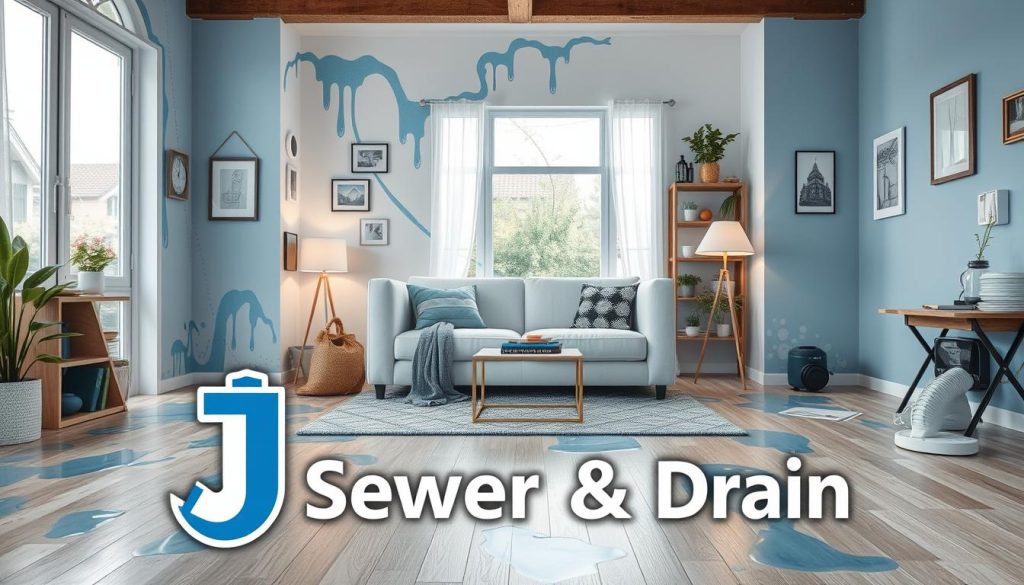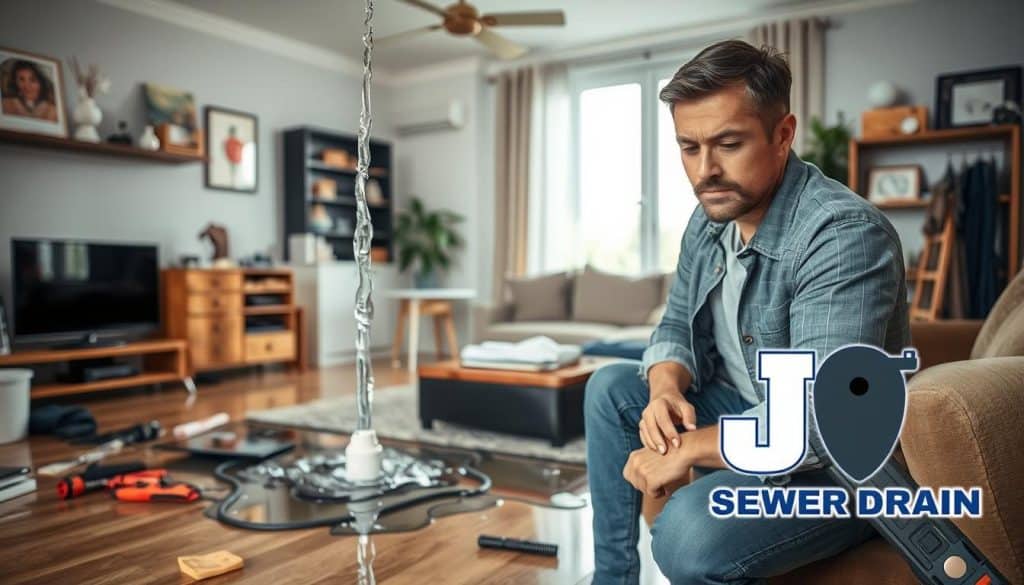Ever found yourself wading through a flooded living room and wondered, “Will Homeowners’ Insurance Cover a Burst Pipe? It’s a question that strikes fear into the hearts of many homeowners. Knowing about burst pipe coverage can save you from big expenses.
Most homeowners’ insurance policies cover accidental water damage, like a burst pipe. But, the details matter. Coverage depends on the burst being sudden and not the homeowner’s fault. Are you worried about your water damage claim? Let’s explore the key points and let J Sewer & Drain Plumbing Inc. do the care for you.
Key Takeaways
- Homeowners’ insurance generally covers accidental water damage from a burst pipe.
- Claims are more likely to be approved if the burst is sudden and unexpected.
- Neglect or poor maintenance can lead to denial of burst pipe coverage.
- Slow leaks or wear and tear are usually not covered by standard policies.
- Understanding these nuances can help ensure your water damage claim is successful.
Understanding Homeowners’ Insurance Coverage for Burst Pipes
Dealing with a burst pipe can be stressful. Knowing your insurance options is key. Most homeowners’ insurance covers sudden events like a burst pipe. This includes fixing or replacing damaged items.
Types of Water Damage Covered
Insurance policies usually cover many types of water damage. If a pipe bursts, your insurance might help with cleanup and repairs. This includes fixing or replacing damaged items.
Exclusions and Limitations
But, your policy might have some exclusions and limits. Damage from ignoring wear and tear or poor maintenance is often not covered. For example, if you didn’t prevent pipes from freezing, your claim might be denied.
Also, flood damage or problems from a sump pump failure need a special policy. Knowing what your insurance covers can save you money. Always check your policy to make sure you’re protected.
What Does Dwelling Coverage Include?
Dwelling insurance coverage is key for homeowners. It helps pay for rebuilding or repairs after damage, like water damage. This coverage keeps your property stable and valuable.
Rebuilding or Repairing Your Home
Home rebuilding insurance is vital for big repairs or rebuilding. It covers costs for fixing floors, walls, roofs, and more. But, it might not pay for fixing the damage source, like burst pipes.

Specifics of Dwelling Coverage
Dwelling insurance coverage is based on your home’s replacement cost. Homeowners should check and update their coverage after making changes. This keeps your coverage in line with your home’s current value and costs.
Does Homeowners’ Insurance Cover Frozen Pipes?
Homeowners’ insurance might cover damage from frozen pipes. But, it depends on how well you prevent pipes from freezing. If you didn’t take care of your pipes, your insurance might not help with the damage.
To get insurance to cover you, follow some important steps. Keep your home warm, even when you’re not there. Also, make sure to winterize your home. These actions help keep your property safe and your insurance valid for frozen pipe issues.
Exploring Personal Property Coverage
It’s vital to have your personal items covered in case of a disaster, like a burst pipe. Homeowners’ insurance offers protection for things like furniture and electronics. This coverage helps pay for cleaning, repair, or replacing your damaged items.

Coverage for Furniture and Belongings
Homeowners insurance often covers personal property claims. This includes items like furniture, electronics, and clothes. It’s key to check your policy to see what’s covered and how much.
Replacement Cost vs. Actual Cash Value
Insurance policies have two ways to pay for damaged items: replacement cost and actual cash value. Replacement cost pays for new items similar to what was lost. Actual cash value gives the item’s worth at the time of the claim. Knowing the difference is crucial when choosing a policy.
Loss of Use Coverage: What Does It Entail?
When a home becomes uninhabitable due to a covered event like a burst pipe, loss of use coverage can be a lifesaver. This coverage, often referred to as additional living expense insurance, helps alleviate the financial burden of securing alternative accommodation and other necessary expenses.
Understanding Additional Living Expenses
Additional living expenses include costs such as hotel stays, meals, and boarding pets. This aspect of the insurance helps maintain your standard of living while your home undergoes repairs. Temporary relocation coverage ensures these costs are manageable, allowing you to focus on returning to normalcy without financial stress.
Claims Process for Loss of Use
Filing a loss of use claim involves documenting incurred costs and demonstrating that they are both necessary and reasonable, based on your living situation before the event. Insurers require detailed receipts and proof of expenses to process your claim efficiently. Additional living expense insurance streamlines this process, ensuring you receive compensation to help you navigate this challenging period securely.
Preventing Burst Pipes and Water Damage
To avoid burst pipes and water damage, homeowners need to take action. Start by keeping your plumbing in check with regular inspections. This helps find and fix weak spots before they become big problems.
Knowing where your water shutoff valve is is key. If you spot a leak, turning off the water quickly can save your home. Also, make sure your thermostat’s batteries are fresh. This keeps your heating on, preventing pipes from freezing and bursting.
Regular home checks are vital to avoid water damage. Catching small issues early can prevent big problems. By staying on top of plumbing maintenance, you protect your home and might even save on insurance costs. The goal is to stop water damage before it starts.






